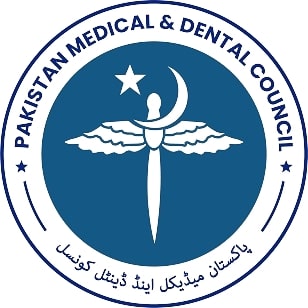ASSOCIATION BETWEEN MATERNAL BASAL GLUCOSE LEVEL AND INTRAUTERINE GROWTH RESTRICTION: A COMPARATIVE CROSS-SECTIONAL STUDY
DOI:
https://doi.org/10.59058/jaimc.v20i3.66Keywords:
Intrauterine Growth Restriction, glucose level, hyperglycemiaAbstract
Background: Intrauterine life is the most pivotal period of development that determines vital outcomes in postnatal life. Diabetes Mellitus may lead to disturbed fetal growth and maternal vasculopathy resulting in placental insufficiency with subsequent development of intrauterine growth restriction (IUGR). This study aims to find an association between hyperglycemia and the risk of IUGR, comparing pregnancies with IUGR with those with adequate for gestational age pregnancies.
Methods: This cross sectional study was conducted in Federal Post Graduate Medical Institute (FPGMI) from January 2015 to January 2016, including 106 pregnant women using non-probability convenient sampling technique. Participants were divided into two groups: Group A comprises of pregnant women with adequate for gestational age pregnancies (n=53) and groups B includes pregnant women with intrauterine growth restricted pregnancies (n=53). Random blood sugar level was estimated by glucose/oxidase test and IUGR was confirmed by ultrasonography at 28-35 weeks of gestation. Shapiro-Wilk test was used to examine data normality and independent t-test was used to compare statistically significant difference. A p- value of <0.05 was considered significant.
Results: Mean basal sugar level of group A was 98.9 ± 7.1 mg/dL and that of group B was 97.9 ± 6.0mg/dL. This mean difference was not statistically significant (p-value= 0.566).
Conclusion: We found no statistically significant association between raised maternal basal glucose level and the occurrence of intrauterine growth restriction at 28-35 weeks of pregnancy.
References
Priante E, Verlato G,Giordano G, Stcchero M, Visentin S, Mardegan V, et al. Intrauterine growth restriction: New insight from the metabolomics Approach. Meta- bolites. 2019;9(11):267-272.
Wubetu AD, Amare YE, Haile AB, Degu MW. New- born Birth Weight and Associated Factors among Mother-Neonate Pairs in Public Hospitals, North Wollo, Ethiopia. Pediatric Health Med Ther. 2021; 12:111-118
Blanc A, Wardlaw T. Monitoring low birth weight: an evaluation of internal estimates and an updated esti- mation procedure. Bull WHO.2005;83:178-85
Sharma D, Shastri S, Sharma P. Intrauterine Growth Restriction: Antenatal and Postnatal Aspects. Clin Med Insights Pediatr 2016;14:10:67
Taha E, Ahmed M, Nasralla K, Mukhtar Y, Yousif E, Sadig E. Investigations of the risk factors of low birth weight in National Ribat University Hospital, Khar-
toum. SJPH.2012; 7:142-5
Tesfa, D, Tadege M, Digssie A. Intrauterine growth restriction and its associated factors in South Gondar zone hospitals, Northwest Ethiopia, 2019. Arch Public Health 78, 89.
Armengaud C, Yzydorczyk B. Siddeek, A, Peyter U. Intrauterine growth restriction: Clinical consequences on health and disease at adulthood. Reproductive Toxi- cology; 99:2021, 168-176,
Muhammad T, Khattak A, Rehman S, Khan M, Khan A, Khan M. Maternal factors associated with intraute- rine growth restriction. J Ayub Med Coll 2010; 22: 64- 9.
Abdel-Latif G, Hassan A, Gabal M, Hemeda S, El- Chami N, Salama I. Mild Cognitive Impairment among Type II Diabetes Mellitus Patients attending University Teaching Hospital. J Med Sci. 2020; 25: 105-11.
Reed J, Bain S and Kanamarlapudi V. A Review of current trends with Type 2 Diabetes Epidemiology, Aetiology, Pathogenesis, Treatments and Future Pers- pective. Diabetes, Metabolic Syndrome and Obesity: Targets and Therapy 2021:14; 3567-602.
Garber AJ, Handelsman Y, Grunberger G, Einhorn D, Abrahamson MJ, Barzilay JI, et al. Consensus state- ment by the American Association of Clinical Endo- crinologists and American College of Endocrinology on the comprehensive type 2 diabetes management algorithm-2020 executive summary. Endocr Pract 2020: 26; 107-39.
Hod M, KapurA, Sacks D, Hodar E,Agarwal M, Renzo G, et al. The International Federation of Gynecology and Obstetricians (FIGO) initiative on gestational diabetes mellitus: A pragmatic guide for diagnosis, management and care.Int J Gynaecol Obstet. 2015 : 131s3; 173-211.
Gutaj P, Wender-Ozegowska E. Diagnosis and Manage- ment of IUGR in Pregnancy Complicated by Type 1 Diabetes Mellitus. Curr Diab Rep. 2016 May; 16(5): 39. doi: 10.1007/s11892-016-0732-8. PMID: 26983627; PMCID: PMC4794518.
Langmia IM, Kräker K, Weiss SE, Haase N, Schütte T, Herse F. Cardiovascular Programming During and After Diabetic Pregnancy: Role of Placental Dysfunc- tion and IUGR. Endocrinol.2019; 10:215. doi: 10. 3389/ fendo.2019.00215.
Miller SL, Huppi PS, Mallard C. The consequences of fetal growth restriction on brain structure and neuro- developmental outcome. J Physiol. 2016; 594: 807-23
Brand JS., West J, Tuffnell D. Gestational diabetes and ultrasound-assessed fetal growth in South Asian and White European women: findings from a prospec- tive pregnancy cohort. BMC Med 2018; 16:203.
Nahavandi S, Seah J, Shub A, Houlihan C, Ekinci EI. Biomarkers for Macrosomia Prediction in Pregnancies Affected by Diabetes. Front. Endocrinol. 2018; 9: 407. doi: 10.3389/fendo.2018.00407
Shakya S, Zhang H. Gestational diabetes mellitus and macrosomia: a literature review. Ann Nutr Metab. 2015; 66 Suppl 2:14-20. doi: 10.1159/000371628.
Downloads
Published
How to Cite
Issue
Section
License
Copyright (c) 2023 JAIMC

This work is licensed under a Creative Commons Attribution 4.0 International License.
The articles published in this journal come under creative commons licence Attribution 4.0 International (CC BY 4.0) which allows to copy and redistribute the material in any medium or format Adapt — remix, transform, and build upon the material for any purpose, even commercially under following terms.
-
Attribution — You must give appropriate credit, provide a link to the license, and indicate if changes were made. You may do so in any reasonable manner, but not in any way that suggests the licensor endorses you or your use.
- No additional restrictions — You may not apply legal terms or technological measures that legally restrict others from doing anything the license permits.
The editorial board of the Journal strives hard for the authenticity and accuracy of the material published in the Journal. However, findings and statements are views of the authors and do not necessarily represent views of the Editorial Board. Many software like (Google Maps, Google Earth, Biorender (free version)) restricts the free distribution of materials prepared using these softwares. Therefore, authors are strongly advised to check the license/copyright information of the software used to prepare maps/images. In case of publication of copyright material, the correction will be published in one of the subsequent issues of the Journal, and the authors will bear the printing cost.










